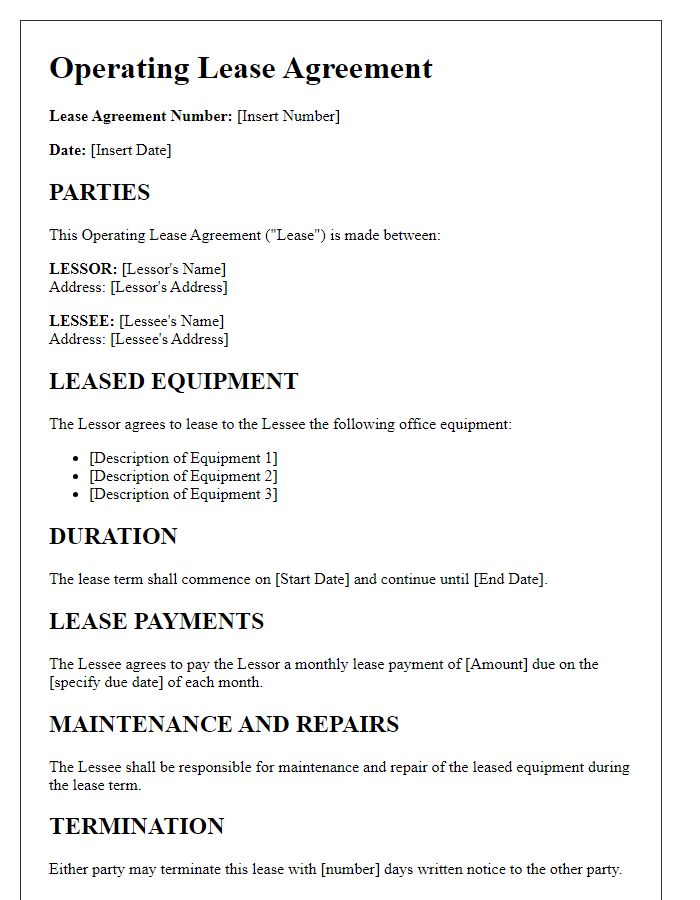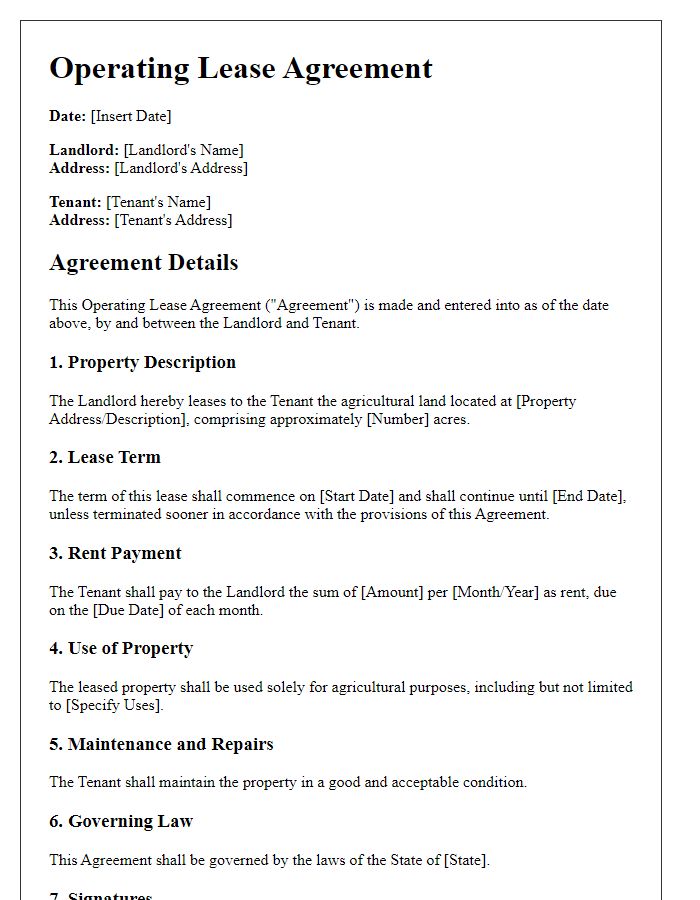Are you looking to streamline your operating lease agreements? Crafting a well-structured letter can make all the difference in ensuring clarity and professionalism in your negotiations. In this article, we'll explore an easy-to-follow template that outlines key components of an operating lease agreement, providing you with the tools to navigate this often complex process. Keep reading to discover how to create an effective operating lease letter that meets your needs!

Clear property description
The leased property consists of a prime commercial space located at 123 Main Street, Springfield, Illinois, providing a total square footage of 2,500 square feet. This property features a modern storefront, ample parking for customers with a capacity of 20 vehicles, and includes high visibility from a busy intersection with an estimated daily traffic count of 15,000 vehicles. The interior has been recently renovated, featuring hardwood flooring, energy-efficient lighting systems, and updated restroom facilities. The property is zoned for retail use under Springfield zoning regulations and is in close proximity to major retailers, enhancing foot traffic and potential customer conversion. Additionally, the lease includes access to a shared loading dock for efficient inventory deliveries and storage options on-site.
Lease term duration
An operating lease agreement typically defines the lease term duration, usually ranging from one to five years, depending on the asset type. For example, office equipment often sees lease terms around three years, while real estate properties may have longer agreements, sometimes stretching up to ten years. Lease commencement dates should be clearly stated, along with renewal options available to the lessee. Furthermore, specific terms, including early termination clauses and notice periods, must be outlined to provide clarity on the lease duration. Initial deposit terms may also play a significant role in the overall lease structure, influencing both rental rates and leasing decisions.
Payment schedule and amount
An operating lease agreement typically includes a detailed payment schedule that outlines the total lease amount, periodic payment intervals, and any associated fees. For instance, a lease for commercial equipment, such as a printing machine valued at $50,000, might involve a payment schedule of $1,000 per month over a three-year term, totaling $36,000. The lease could stipulate additional terms, such as a security deposit of $2,000 and any maintenance costs to be covered by the lessee. Late payment fees may also apply, often set at 5% of the overdue amount, effectively incentivizing timely payments. Clear articulation of these financial obligations protects both parties and ensures compliance with agreed terms.
Maintenance and repair responsibilities
In an operating lease agreement, maintenance and repair responsibilities are often defined to ensure clarity between the lessor and lessee. The lessor, typically the property owner or equipment provider, holds the primary responsibility for maintaining the structural integrity of the leased asset, encompassing major repairs, such as roofing and HVAC systems, which can incur significant costs (average commercial roof repair costs can range from $1,000 to $4,000). On the other hand, the lessee, the party renting the asset, is generally responsible for routine maintenance and minor repairs. This can include everyday tasks, such as changing air filters or light bulbs, which can cost around $20 to $50 per service. The lease may stipulate specific reporting procedures for repairs, with clear timelines for addressing urgent issues, ensuring that both parties understand their obligations and the implications of neglecting maintenance duties. Additionally, the agreement might detail liability for damages caused by misuse or negligence, protecting the lessor from unforeseen repair costs and ensuring the asset remains in good condition throughout the lease term.
Termination and renewal conditions
Termination and renewal conditions in an operating lease agreement outline the specific terms under which either party may end the lease or extend its duration. Typical termination clauses may include notice periods, often ranging from 30 to 90 days, that stipulate how much advance notice must be given to terminate the lease. Conditions regarding mutual agreement for early termination could involve payment of penalties or the return of the leased asset in good condition. Renewal conditions may specify an automatic renewal clause for the lease, often at predetermined rates, provided neither party issues a notice of termination. Additional factors such as annual escalation clauses, determined increases in rent, and the need for written consent for any modifications to the renewal terms might also be included.













Comments